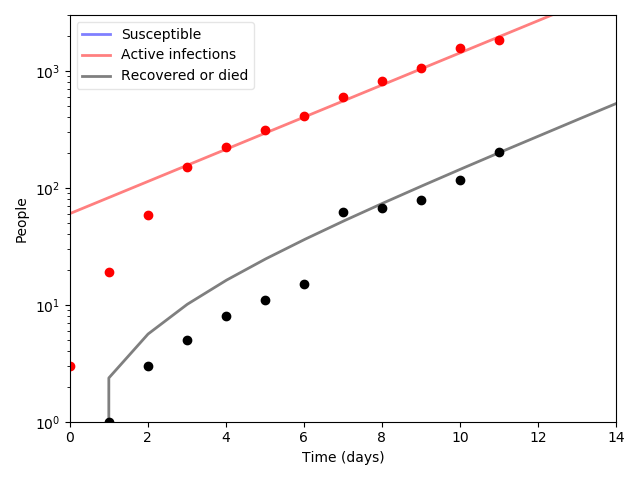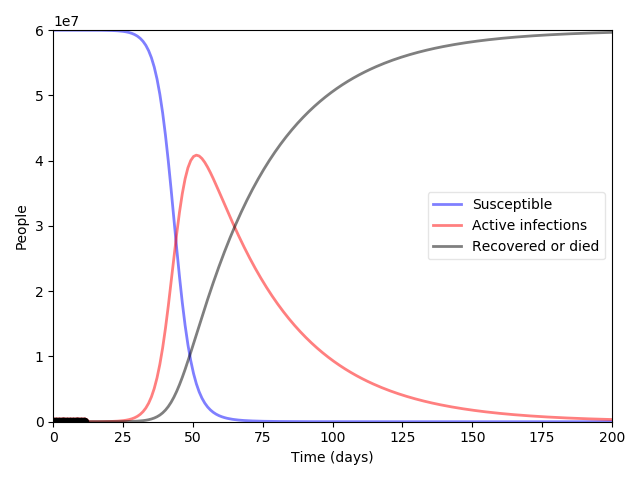If you take the number of confirmed infections over time, it's growing exponentially, but crucially it's not growing exponentially from day zero (the 20th of February) when there were 3 cases in Italy (two Chinese tourists in Rome and 'patient 1' in Codogno); extrapolating the more recent data back to that day means there must have already been about 60 cases.

- Figure_1.png (30.72 KiB) Viewed 90274 times
The time constant in the exponential is 3.08 days and the time it takes the number of cases to double is 2 days, 3 hours.
This is actually a
SIR model, in which I have a population of 60 million, an initial number of 60 infected individuals (and 0 "recovered").
To get the right exponential growth I need a β of 0.35, which corresponds to a typical time between contacts of 2.86 days. But there's a long lag between the growth of infections and the growth of recovered patients so γ needs to be 1/(30 days) to fit that. This ends up giving a very high R_0 of 10.5.
So we should really be hoping that we've missed a lot of people previously infected and already recovered, because otherwise it's going to end up looking like this:

- Figure_1_full.png (35.48 KiB) Viewed 90274 times
Note that if the containment measures have worked and the β parameter has been reduced the peak will be broader and later. This is helpful if it means fewer people need to be in hospital at once, or if it gives us time to develop and administer a vaccine.